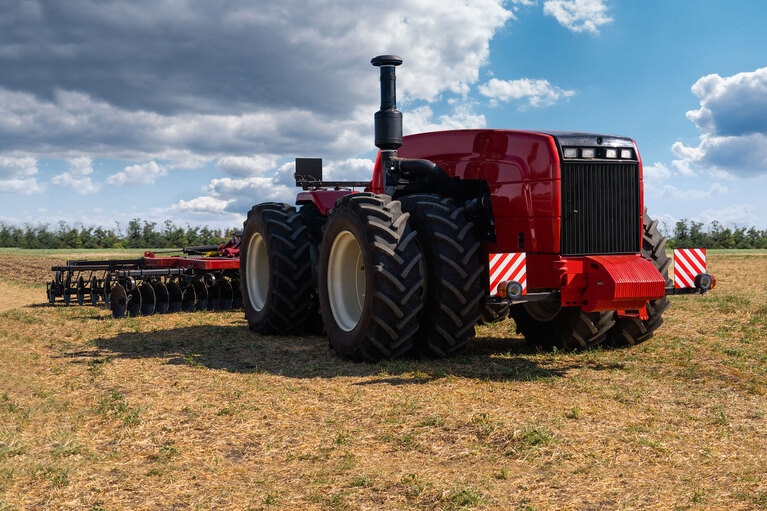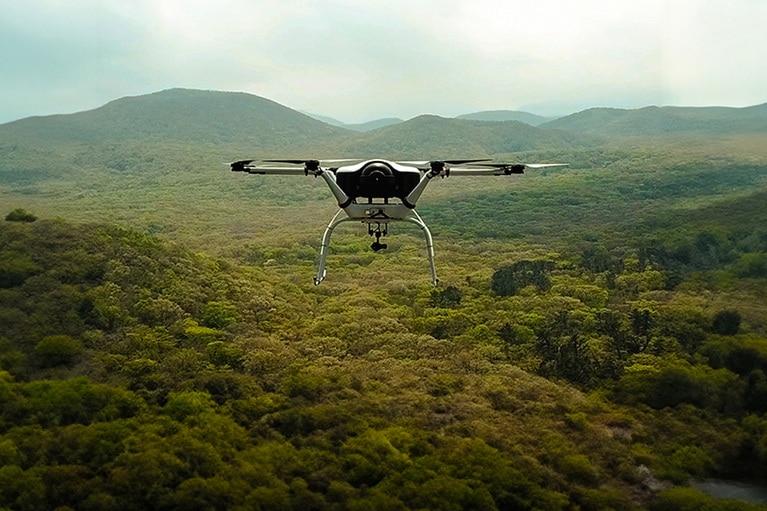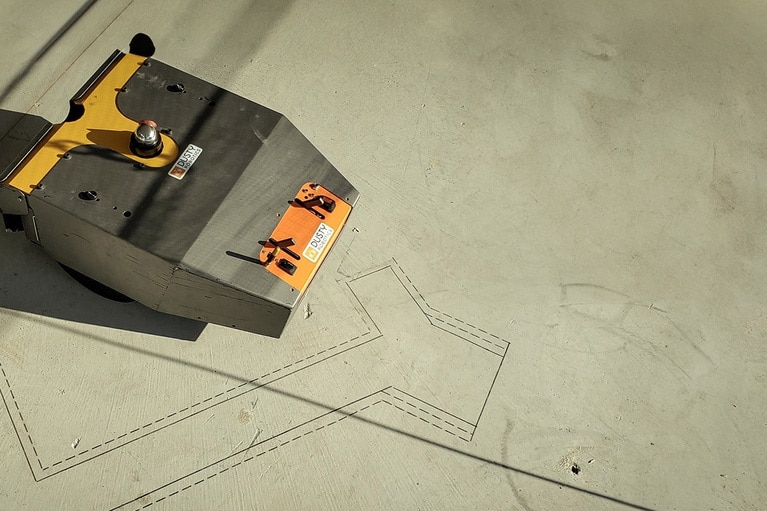
VideoRay drives safe, effective underwater exploration leveraging AI and today’s newest technologies
Vicor Powering Innovation podcast discusses the proliferation of ROV applications and how VideoRay is responding to new underwater missions
Creating high performance mobile robots that can scale is easy when using high density power modules.
The mobile robotics industry is rapidly growing and evolving. With a projected market of nearly $30B by 2023 [World Robotics 2020] the robots manufactured in the near future will address a wide variety of markets by solving well-known and yet-to-be-discovered problems. They already do more than just move from point A to point B: they make real-time decisions based on environmental inputs and their own mission parameters.

Figure 1: The DCM converter series fits the needs for this class with operation from 43 – 154V input. The DCM3623 enables a regulated 24 or 48V distribution from the battery for servo drives, other payloads and downstream converters. The DCM3623 provides 240W of power at 90% efficiency from a 36 x 23 x 7.3mm package. With 24 – 48V rail established, ZVS buck or buck-boost regulators can typically be used to power lower voltage rails.
Providing these capabilities requires motors, sensors and processing subsystems, but to keep ahead of the competition the robot’s platform must be capable of quickly upgrading these components as better options become available. To do that quickly while maintaining size, weight and cost targets requires an optimized power delivery network (PDN) that can scale to meet changing requirements. Considering the questions below will help you arrive at the best answers for your platform. In doing so you will be able to design a better PDN for your mobile robot that endures whatever changes your company will face as your mission parameters evolve.
You worry about the economics of your battery (cost, supply, lifecycle) and the longevity (cycle count, aging), but have you considered that the voltage you use impacts the overall weight of your design?
It’s a simple fact (due to Ohm’s Law) that you can reduce cable weight by distributing power at a high voltage and thus a low current, which requires a smaller (and lighter!) cable. Smaller and lighter cables also have less resistance relative to larger sizes, which reduces the amount of wasted heat in your system. For these reasons, there are a lot of 48V-based (and higher!) battery power architectures compared to lower 12V solutions, and there are efficient, lightweight converters available: both the fixed ratio BCM and the regulated DCM converters.
Your platform will evolve: processors get faster, motors/actuators get more numerous, sensor arrays demand more power with expanded capabilities. Do you want to redesign your PDN every time you swap out a subsystem?
Instead of redesigning your PDN, you can increase the overall battery capacity using additional cells in parallel for more energy storage at the same PDN source voltage. Now you don’t have to redesign with a different voltage and deal with the ripple effect of that change throughout your platform. To optimize your PDN for the future, pick a battery distribution voltage that is high – at least 48V – and with a discharge profile that allows the use of a fixed-ratio converter when you need to power a subsystem. Fixed-ratio converters are the most efficient, smallest size, lightest weight converters for step-down conversion. Your PDN can place these small modular converters wherever you need to convert 48 to 12V or from 800V to a SELV voltage, for example.
A brute-force approach to powering dynamic loads is to size the distribution of the PDN for the maximum load power, but if the load has a low duty cycle, a significant weight is added by a large cable to meet the need. Instead of a large cable, an alternative could be to add local energy storage near the point-of-load with a nearby capacitor that can provide the power when needed. However, there may be a better option to optimize your PDN: a fixed-ratio converter. These converters can function like an ideal transformer and have the benefit of reflecting capacitance from input to output (also works output to input). This means that the capacitance on the input appears as if it is capacitance on the output scaled by the same ratio as the converter’s conversion K factor. The lightest weight solution will use a small capacitive value on the input of a fixed ratio converter instead of a converter followed by a much larger capacitor.
Figure 2: Various produce including strawberries, apples and lettuce are being planted, maintained and harvested using automated vehicle guidance along with visual recognition robotics. Large robotic vehicles or equipment are typically powered from a high-voltage DC source of 400V or more.
Automating tasks is essential to efficiency improvements, so even if your robot presently has human control, it’s likely that some of those human-controlled tasks will be automated in the future. Looking at current machine learning/artificial intelligence hardware shows that the power demands can be daunting, but Vicor solutions are already meeting those requirements. Planning for some additional power capability now (remember #2!) will help you scale easily when you are ready to integrate AI into your enhanced capabilities.
Figure 3: Improved sensors, autonomy, mobility and AI (allowing deep learning) is enabling inspection robots to replace humans, especially in hazardous or confined areas like inside pipelines or in storage tanks.
Do not underestimate the advantages of a tethered design, especially if you have a bounded area of operation, like a factory, warehouse or an arena. In fact, robots (both piloted and autonomous) have used tethered power systems, which can deliver kilowatts of power over a small-diameter cable. As the graph below illustrates, higher voltages allow for more power over the same size (and weight) cable.

Figure 4: Since the tether allows for indefinite operating time, you can increase the voltage (to 400V, 800V or higher) to provide more power as your needs to support a broader range of capabilities (sensors, data gathering, etc.) on the platform. While this keeps the cable light, don’t forget that lightweight converters still give you even more advantages – remember #1 & #3?
Figure 5: Some mobile robots need to be connected to a base station via a tether cable. In applications such as underwater inspection, the tether allows for extended operation and high-bandwidth data transfer from cameras in otherwise noisy and harsh environments. The thinner and lighter the cable, the further and longer these robots can operate, but thinner cable limits power delivery from traditional PDNs. The Vicor modular approach enables higher voltages to be transmitted over the cable, reducing the cable size and weight without compromising power. The small size and low weight of Vicor modules also makes the robots lighter and able to increase payloads.
Common interfaces enable modularity by standardizing on mechanics, data interfaces and power. Providing modularity at the FRU level of your system improves the maintainability in the field. However, it is possible that at some point your interface will lag behind the capabilities that you may want to include in your system. For example, 12V had been the standard distribution voltage in computing and automotive PDNs for decades, but now 48V is becoming popular as power levels rise. To extend the value of modularity you can use converters that allow for efficient conversion in the PDN while maintaining the interfaces. Going back to the 48-to-12V example, the NBM2317 is a great example of a product that bridges 12 and 48V with bidirectional, high-efficiency conversion.

Figure 6: The first powertrain architecture highlights the PRM power module, a high-performance buck-boost regulator. The PRM creates an intermediate bus of 24V to 48V with 96 to 98% efficiency to power servos and additional downstream power modules, including fixed ratio NBMs, ZVS buck and ZVS buck-boost regulators. All modules can also be paralleled for higher power conversion.
These six questions will guide you down a path toward designing a PDN that:
Read more on how Vicor powers mobile robots using module power components that optimize robotic capabilities.
VideoRay drives safe, effective underwater exploration leveraging AI and today’s newest technologies
Vicor Powering Innovation podcast discusses the proliferation of ROV applications and how VideoRay is responding to new underwater missions
The future of long-haul trucking is accelerating autonomously on a freeway near you
Kodiak autonomous technology revolutionizes long-haul trucking. Learn more about Vicor power modules that drive mission critical ‘seeing’ sensors
Next generation hydrogen powered drones are doing search and rescue, saving lives
Doosan Mobility’s life-saving drones using hydrogen fuel cells and high-density power modules, enabling 5x longer flight time than lithium ion batteries
From toys to construction site tools, OLogic brings robotic ideas to life
OLogic extols high-density power modules to drive today’s robotic revolution






